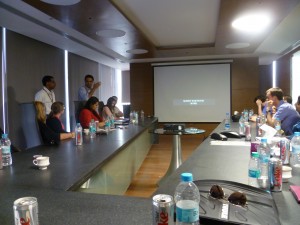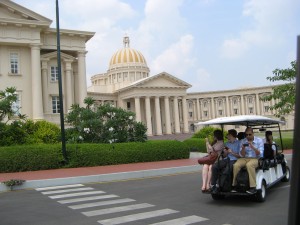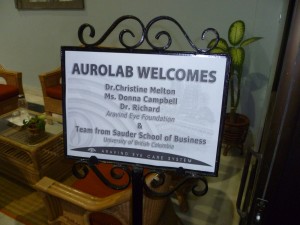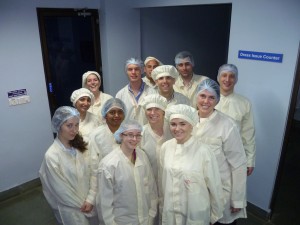In Thomas Friedman’s 2005 book “The World Is Flat: A Brief History of the 21st Century”, he argues that our increasingly inter-connected and globalized world is becoming both a more level commercial playing field, and more competitive one. He argues that these ‘flattening’ forces will only accelerate and put pressure on businesses in developed countries as the talents and abilities of individuals in developing nations emerge. (See http://en.wikipedia.org/wiki/The_World_Is_Flat.)
This year, UBC launched its revamped MBA program, which includes a mandatory two-week Global Immersion in one of Denmark, Singapore or India. As one of the 22 students traveling to India from Februray 10th to 24th, I had the opportunity to see both these flattening global forces in action, and where the differences between cultures still maintain a disconnect that maintains the divide between developed and developing countries. Through site visits to several companies, visits to an NGO that delivers essential health-care services at a world-class level, and a case competition with students from the prestigious IIM Bangalore, we saw the inspiration of Friedman’s book first-hand.
In a world where geographical boundaries are increasingly irrelevant, outsourcing has moved online to tap into international workforces through such automated platforms as odesk and elance while Amazon’s Mechanical Turk service harnesses the power of human intelligence worldwide to crowdsource answers that computer algorithms alone cannot determine. Many of these boundary-shattering platforms have only been possible because of advances in communication and collaboration technology. I found it fascinating to hear about how one company we visited, 2adpro, has invested heavily in a technology platform to better enable collaboration on marketing projects in geographically distributed teams. They are a marketing and design firm, that traditionally has competed on price for work that requires more lower-level execution than high-level vision and cultural context. As the cost advantage such Indian firms erodes, they are trying to leverage their existing relationships and build skillsets at a higher, more strategic level. But it’s the investment in these collaboration platforms that I think will pay off for them and be a key differentiator for such companies. As Friedman notes, the rise of such workflow software will enable global competition and cooperation. Companies in developing nations are leading the way in determining how the new era of online international business will operate.
That technology is a driving force behind the economy of India that helps the country gain competitiveness internationally was evident throughout our time in India, from the impressive Infosys training facilities where the company trains an overwhelming number of computer programmers, to our tour of Aurolab in Madurai. Aurolab is the high-tech manufacturing facility for the Aravind Eye Care System, a social enterprise that performs nearly 7% of all eye surgeries in the world, many of them at no cost for those who cannot afford to pay.
Our experience touring the Aurolab facility and both the for-pay and free Aravind eye hospitals was one of the most memorable parts of the trip. It was an excellent example of technology improving lives for all social sectors, not just those at the top with education and access to the latest technology. Too often the technological accelerators end up dividing developing nations even further, instead of bringing up the standard of living for the country as a whole. As we saw when examining the problems facing India regarding malnutrition (see my next post about the malnutrition case competition at IIM-Bangalore), disparity between classes and regions in India is growing, not shrinking, as it gains economic momentum. For the world to truly become ‘flat’, equal benefits from these new economic tradewinds need to be derived across developing societies.




